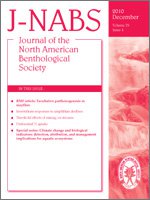Explaining the mechanisms underlying patterns of species diversity and composition in riverine networks is challenging. Historically, community ecologists have conceived of communities as largely isolated entities and have focused on local environmental factors and interspecific interactions as the major forces determining species composition. However, stream ecologists have long embraced a multiscale approach to studying riverine ecosystems and have studied both local factors and larger-scale regional factors, such as dispersal and disturbance. River networks exhibit a dendritic spatial structure that can constrain aquatic organisms when their dispersal is influenced by or confined to the river network. We contend that the principles of metacommunity theory would help stream ecologists to understand how the complex spatial structure of river networks mediates the relative influences of local and regional control on species composition. From a basic ecological perspective, the concept is attractive because new evidence suggests that the importance of regional processes (dispersal) depends on spatial structure of habitat and on connection to the regional species pool. The role of local factors relative to regional factors will vary with spatial position in a river network. From an applied perspective, the long-standing view in ecology that local community composition is an indicator of habitat quality may not be uniformly applicable across a river network, but the strength of such bioassessment approaches probably will depend on spatial position in the network. The principles of metacommunity theory are broadly applicable across taxa and systems but seem of particular consequence to stream ecology given the unique spatial structure of riverine systems. By explicitly embracing processes at multiple spatial scales, metacommunity theory provides a foundation on which to build a richer understanding of stream communities.
How to translate text using browser tools
18 January 2011
Metacommunity theory as a multispecies, multiscale framework for studying the influence of river network structure on riverine communities and ecosystems
Bryan L. Brown,
Christopher M. Swan,
Daniel A. Auerbach,
Evan H. Campbell Grant,
Nathaniel P. Hitt,
Kelly O. Maloney,
Christopher Patrick
ACCESS THE FULL ARTICLE
It is not available for individual sale.
This article is only available to subscribers.
It is not available for individual sale.
It is not available for individual sale.
<
Previous Article
|
biodiversity
dendritic ecological network
dispersal
drift
metacommunity ecology
patch dynamics





